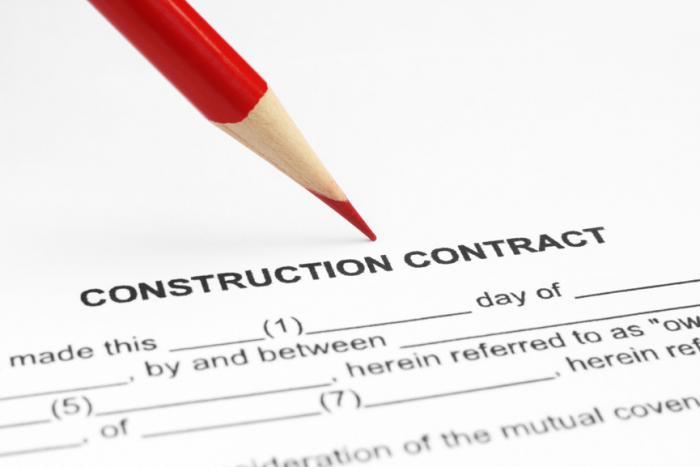|
If you're considering a remodeling project for your home, chances are you're going to need a contractor. Here are six things to keep in mind before hiring a professional to help.
1. Know what you want Before you make any phone calls, make sure you have a clear picture of what you want to remodel and what you'd like the outcome to be. Even if it's not crystal clear, a vision or sample images you can show a contractor will help immensely in getting an accurate estimate. A contractor who can bring ideas to the table are great, but make sure you get an estimate on what you're looking for so you can make 'apples to apples' comparisons. 2. Ask your friends and family Good remodeling contractors typically generate a lot of positive recommendations. Ask your friends, family, neighbors and other people you trust if they have ever worked with a contractor that they liked. Asking not only helps you narrow down your list for who to contact but also who to avoid. Knowing who does, and doesn’t, do a good job is a key part of how to choose a contractor for your home remodel. 3. Look for online reviews Online reviews can be very helpful. If you seek these out, you'll get a broad range of experiences customers have had with the contractors you're researching. Keep in mind every contractor will have good reviews and bad reviews. Treat these like a bell curve, throwing out the best and the worst. But, look for the average and look for any themes... Is customer service a persistent concern? Did the contractor regularly go over budget? Were timelines an issue? Also, look at how complaints were handled. Did the contractor work to resolve the issues at hand? 4. Speak with multiple contractors Always get multiple bids on your project. Even if you love the first plan you get, stopping there means you’ll never know if the estimate you received offers good value. Home remodeling contractors may charge different rates because they may have different specialties, so getting multiple bids is a good idea. Be sure to ask if they work on projects of your size, and what their availability is for your desired timeline. 5. Check references References, such as current customers and subcontractors, can help you learn about the quality of the work. Current customers can share personal experiences and subcontractors can provide red flags, such as not paying on time or cutting corners by using less than stellar materials. You can also check to see if any complaints are registered with the Oregon Construction Contractors Board. 6. Seek well-defined bids To best compare estimates, ask each contractor to provide details about the costs for labor, materials and any other related expenses. Once you have an estimate you like, start the negotiation process. Make sure the contract is detailed and that you’re comfortable with it before the project starts. Once work begins, communication is the key to a happy and successful remodel. At Fort Rock Construction, we take great pride in our honest, straightforward approach to contract bids. We may not always be the lowest bid, but you can trust that we've included everything from start to finish so you're not hit with surprises later on. Give us a call today to schedule a consult, and we'll prepare a no-obligation quote. 541-767-1611
7 Comments
When you decide to undertake a construction project, be it new construction or a remodel, one of the first steps you will need to do is to talk with contractors so you can get bids. Easy, right? All you need to do is call up some contractors and have them come meet with you... or is it really that simple?
In order to get quality bids, the first step you need to take is to make sure you're talking with contractors who are suited for your type of project. Make sure you do some homework before you pick up the phone. Does the contractor have experience with projects like yours? Do they have photographs of completed projects? References? If you don't reach out to the right group of contractors, you run the risk of someone saying they can do the job when he or she may very well be out of their range of expertise. Okay, so you have your group of contractors... The next step is preparing how you will review the project with each contractor. In order to get "apples to apples" bids, you'll want to make sure you're presenting the project in the same way to each person. For example, it can be a good idea to have an outline of the key points: project type, timeline, budget, preference on styles and/or materials, etc. Now, of course, contractors may ask clarifying questions while you're reviewing the details, so be sure to take note of these items. It will be helpful to provide all of the contractors a document with this additional information so you can get the best bids possible. After you've met with each contractor and answered their questions, be patient. It isn't likely you will get a bid within a day or two. Chances are it might take a bit longer as your contractors will need time to communicate with their subcontractors and suppliers, and possibly engineers or architects, depending on your project. But do ask each contractor when you can expect to receive their bid...and hold them to it. This is one of the first tests to see how well they communicate and maintain expectations. A failure here can be a red flag. Once you have the bids from the different contractors, what's next? Now it's the fun part... You should review each bid side-by-side to see if the details match your project outline, if the contractors are on the same page with approach, time, materials, etc. Any bids that are totally off from the others should probably be set aside for further evaluation. Those that are similar should also be grouped together. This is an important step in the bid selection process. While it could be tempting to sort bids by price, that's a dangerous road. The low bid may be missing something and the high bid may have too much overhead or padding. A good rule of thumb is to narrow your selections from the group of like bids and focusing on those who are in the middle of the road in terms of price. Invite each contractor back for a second interview to review their bid. This second meeting will help clarify any items in the bid and help you to solidify which contractor you have a good rapport with. From there, you should be able to make your final selection. At Fort Rock Construction, we're very rarely the highest bid and we're not often the lowest bid. We provide complete and realistic bids that often fall right in the middle. We ask lots of questions so we take into consideration both your preferences as well as those items that perhaps you had not yet considered. We walk through our bid with you, answering every question you have along the way, and we explore options if what we present needs adjustment. Our number one goal is to make sure the work we do for you exceeds expectations and that you're completely satisfied. And, we hope through the bid process we can earn your trust. If you have an upcoming project and you would like a complete A-Z realistic bid, we hope you will give us a call at 541-767-1611. We provide general contractor and home remodeling services throughout Eugene, Springfield and the Willamette Valley. One of the most important things to any general contracting or construction business is to ensure the safety and health of your crew. Employees are the most essential part to any business and are your frontline for word-of-mouth advertising and company reputation. During the hot summer months, heat exhaustion and dehydration are among the most prominent health issues among construction workers. There is an incredibly high cost for unhappy employees as well, so ensuring both positive morale and health for your workforce can go a long way for your business’s potential success. Here are some useful tips to ensure your workers’, and your own, health:
All of these measures can improve employee morale and even help you avoid a lawsuit in case one something did happen to one of your employees and there was a means to prevent it. At Fort Rock Construction, we always take the proper steps to improve company morale and make sure the customer is happy as well. Please contact us today. In recent months, the housing market has shown a great increase in average home price, reaching nearly 12.1%. Separately, data from the National Association of Realtors showed that existing home sales were running at a seasonally adjusted annual rate of 5.39 million homes for July, a jump from 5.06 million homes in June. The reason for such a high number of sold homes is more than likely due to the rising interest rates, up from 3.5% in March to 4.58% for a 30-year mortgage. Despite this historic rise in mortgage rates in such a short period of time, there has not been a delay in the real estate recovery. Here are some reasons why this may be.
A healthy economy can mean a number of positive things for homeowners. If you are looking at potentially selling in the near future, but are afraid that you may be losing value on your home due to the need for an installation or remodeling of a current room or outside project, please contact us today for assistance. Have you ever considered building your own house as an alternative to purchasing a home? Considering all the planning and total cost of building your own home, we thought it would be helpful to explain how a house is built and what different parts go into making a home.
http://www.ehow.com/how-does_5201097_house-construction-works.html Now that spring is here, it’s time to start thinking about and setting up your sprinkler systems. At Fort Rock Construction, we’d like to provide a few helpful tips so that you have a nice yard to enjoy with the warmer weather, as well as to make sure that your sprinklers are not set to cause any damage to your structures.
Step 1 — Be sure the ground is frost free. Filling the pipes too early can lead to expensive freeze damage. Use a shovel to check 12 inches beneath the surface as frost can hide. Step 2 — To allow air a chance to escape from the irrigation system while you’re refilling the lines, remove the sprinkler head found at the highest part of each zone. Step 3 — Start filling the main line very slowly. A quarter turn is about all it should take. You’ll want to be patient; depending on the size of your zone, it can take a while to fill each zone. But don’t rush the process! Filling the irrigation system too quickly can cause a surge of air pressure which can break fittings and burst your system. After the main line is filled, repeat this process for each zone. Step 4 — Look at the places where you removed the sprinkler heads. If the water is running clear and doesn’t contain any air bubbles the zone has been properly filled. You can now replace the sprinkler heads and continue to run each zone for two minutes to ensure any trapped air has been flushed out of the system. Step 5 — Check each sprinkler head for distance and angle. During the winter, breaks or growth may have happened in the heads causing erratic spray. Make sure all plants/lawn are being reached and that the spray is not going against your house, fence, or other structures. Excessive spray on these will accelerate the degradation of the siding or boards of these structures. Also be aware of any places where water is pooling. Make sure there is not water pooling along the foundation of your structures as this will also cause damage over time. Step 6 — Check the accuracy of your timer programs, then it’s safe to run your sprinkler system as usual. If you come across any problems during start up, or at any other time, call Fort Rock Construction at (541) 767-1611 and we’ll be happy to connect you with our favorite irrigation professionals. Your gutters are a complex system of integrated components that perform a significant and important part of water evacuation. If your gutter systems are not operating properly, tremendous damage can occur. Typically gutters and water evacuation include: Proper flashing or counter flashing from your roof eaves, gutters, downspouts, splash blocks, or storm drains and dry wells. Every component depends on each other to perform properly to enable successful operation.
Are your gutters leaking, sagging from weight, improperly fastened or just plain full of debris? Cleaning gutters are an important part of your maintenance schedule. The protection gutters create can easily become problematic and work against the dynamic they were designed for. Backed up gutters can cause water intrusion at the roof line damaging soffits, siding, rafters and fasciae resulting in moisture extending into the interior of your home. Needless to say, properly functioning gutters preserve the integrity, while improperly maintained gutters can cause massive damage. Gutters can be fairly simple to maintain providing the height is within your comfort zone. However, professional services are readily available to perform this task usually at a pretty reasonable cost. Downspouts and storm drains. Cleaning gutters should always include properly maintaining downspouts. Clogs can occur in downspouts causing overflow at the gutters and may eventually cause stoppages in lines leading to storm drains or drywells. A worst case scenario would be saturation of soils in or near your foundation causing unwanted moisture to migrate into crawlspaces or basements. Erosion is also a concern when drainage components do not function as designed. We'll be one of the first to admit that hiring a contractor can be a scary process, especially if you've never done it before. After all, you're looking to bring someone into your home, with whom you're likely spending a significant amount of money, but can they be trusted to do the work, and do it well?
Typically those looking to hire a contractor for the first time do one of three things. 1. Go through the phonebook and make calls. 2. Go online and search for websites and reviews. 3. Ask a friend for a referral. These approaches are not bad or wrong, but certainly shouldn't be done as the only homework. A first impression is easy to make and so sometimes people end up making their decision based on which contractor answered their phone, seemed nice, etc. While these are great qualities you should expect from your contractor, we have a few tips that can help you make a better decision, leading to a better finished project.
Wishing you well with your next project, The Fort Rock Construction Team |
Our Blog
Tricks of the construction trade, inspiration for your next project, and highlights of completed projects. Categories
All
|
|
Fort Rock Construction — Licensed, Insured, Bonded: CCB #140699
phone: 541-767-1611 // fax: 541-767-3005 Mailing Address: P.O. Box 1713, Cottage Grove, OR 97424 Auxiliary Address: 1574 Coburg Rd #872, Eugene, OR 97401 © 2017-2019 Fort Rock Construction. All rights reserved. |
|



 RSS Feed
RSS Feed